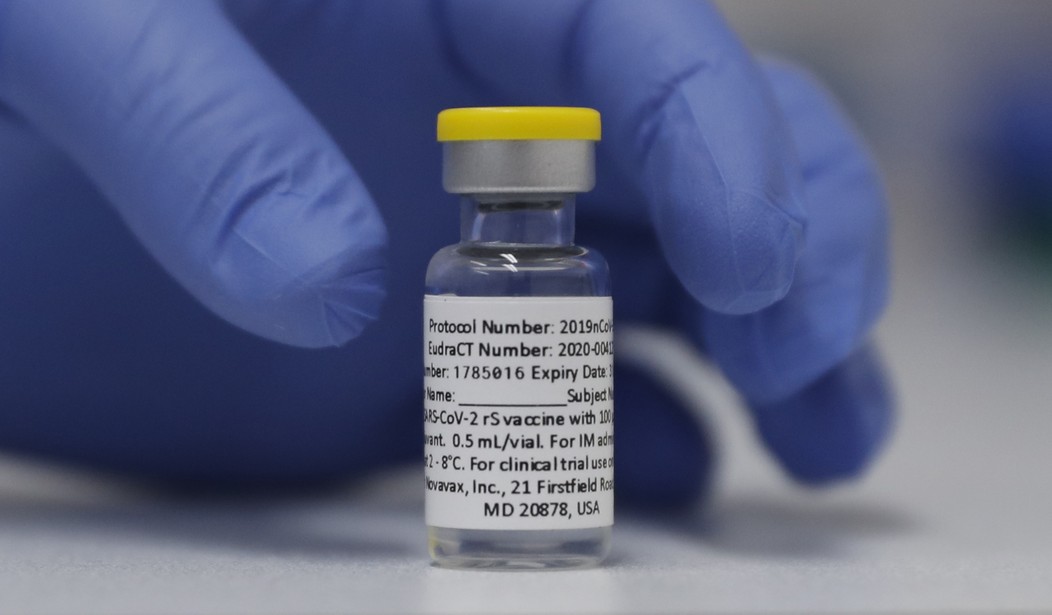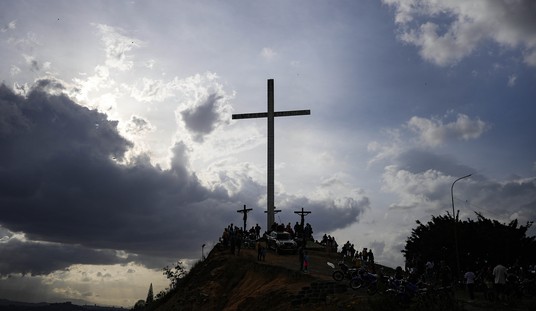In South Africa, where the omicron variant was first announced last Friday, there has been an uptick in children who have been hospitalized with COVID-19. As Alexander Winning reported on Saturday for Reuters, South African officials have said they are "are comforted by clinicians' reports that the children have mild disease." That's according to Ntsakisi Maluleke, a public health specialist in the Gauteng province that includes Tshwane and Johannesburg.
Winning also explained that the data is not all available yet to suggest the link between the omicron variant being a greater risk for children. As he wrote:
A large number of infants admitted with COVID-19 last month in Tshwane, the metropolitan area that includes the capital Pretoria, raised concerns that the newly identified Omicron could pose greater risks for young children than other variants.
Scientists have yet to confirm any link and have cautioned that other factors could be at play.
...
Since only a small percentage of South Africa's positive COVID-19 tests are sent for genomic sequencing, officials do not yet know which variants the children admitted to hospital have been infected with.
What precautions doctors are taking may be out of an abundance of caution:
Maluleke said healthcare workers could be acting out of an abundance of caution. "They would rather have a child under care for a day or two than having a child at home and complicating, ... but we really need to wait for the evidence," she said.
She said many COVID-19 patients in Gauteng were reporting "non-specific" flu-like symptoms like a scratchy throat. But she urged parents and pregnant women, another cohort that has seen more hospital admissions recently, not to take flu-like symptoms lightly and to get tested in case intervention is needed further down the line.
This is where Maluleke's recommendation for how the "public needs to be less fearful but vigilant" comes in. She also indicated that Gauteng's bed capacity detected to COVID was only about 13 percent.
Recommended
Further down in Winning's report, but a crucial point to highlight, is mention of an official article from the South African Medical Research Council, to do with "Tshwane District Omicron Variant Patient Profile - Early Features."
The article explains that a majority of hospital admissions are "incidental COVID admissions," meaning they were admitted for something else. These admissions are also not oxygen independent.
From that article:
The main observation that we have made over the last two weeks is that the majority of patients in the COVID wards have not been oxygen dependent. SARS-CoV-2 has been an incidental finding in patients that were admitted to the hospital for another medical, surgical or obstetric reason.
A snapshot of 42 patients in the ward on 2 December 2021 reveals that 29 (70%) are not oxygen dependent. These patients are saturating well on room air and do not present with any respiratory symptoms. These are the patients that we would call ‘incidental COVID admissions’, having had another medical or surgical reason for admission. Thirteen (13) patients are dependent on supplemental oxygen of which nine (21%) have a diagnosis of COVID-19 pneumonia based on a combination of symptoms, clinical signs, CXR and inflammatory markers. All are being prescribed steroids as the mainstay of therapy. The remaining 4 patients are on oxygen for other medical reasons (2 previously on home oxygen, 1 in heart failure and 1 with a confirmed diagnosis of Pneumocystis Pneumonia).
While it's important to once more emphasize it's early, what is available is encouraging, especially when it comes to a low death rate. Emphasis is mine:
The best indicator of disease severity is measured by the in-hospital death rate. There were 10 deaths in the SBAH/TDH cohort in the past two weeks, making up 6.6% of the 166 admissions. Four deaths were in adults aged 26 – 36 and five (5) deaths were in adults over 60. One death was in a child in whom the cause of deaths was unrelated to COVID. There were no COVID related deaths among 34 admissions in the paediatric COVID wards over the last two weeks. This compares favorably to the proportion of deaths at the complex over the past 18 months which was 17%. The trend over the next two weeks will be clarified as the number of deaths is currently low, and sufficient time will have elapsed for the development of greater severity of disease and the number of deaths might be expected to increase. For now, the death rates over the last two weeks.as well as over the past 18 months at the SBAH/TDH complex are lower than the overall in-hospital death rate of 23% for the country over all previous waves, as reported by the NICD.
There were only 2 patients in the COVID ICU in the last 14 days, neither of whom had a primary diagnosis of COVID pneumonia. Sixty-three patients were admitted to high care, but our anecdotal information is that the majority of high care admissions were for a diagnosis other than COVID.
...
A significant early finding in this analysis is the much shorter average length of stay of 2.8 days for SARS-CoV-2 positive patients admitted to the COVID wards over the last two weeks compared to an average length of stay of 8.5 days for the past 18 months. The NICD reports a similar shorter length of stay for all hospitals in Tshwane in its weekly report. It is also less than the Gauteng or National average length of stay reported by the NICD in previous waves.
In summary, the first impression on examination of the 166 patients admitted since the Omicron variant made an appearance, together with the snapshot of the clinical profile of 42 patients currently in the COVID wards at the SBAH/TDH complex, is that the majority of hospital admissions are for diagnoses unrelated to COVID-19. The SARS-CoV-2 positivity is an incidental finding in these patients and is largely driven by hospital policy requiring testing of all patients requiring admission to the hospital.
Using the proportion of patients on room air as a marker for incidental COVID admission as opposed to severe COVID (pneumonia), 76% of patients at the SBAH/TDH complex are incidental COVID admissions. This very unusual picture is also occurring at other hospitals in Gauteng. On 3 December Helen Joseph Hospital had 37 patients in the COVID wards of whom 31 were on room air (83%); and the Dr George Mukhari Academic Hospital had 80 patients of which 14 were on supplemental oxygen and 1 on a ventilator (81% on room air).
That these cases are "mild" is consistent with statements Dr. Angelique Coetzee, the South African doctor who informed the country's vaccine advisory committee, shared with The Telegraph. Dr. Coetzee indicated that the symptoms were "so different" and "so mild."
Katie has since reported on Dr. Coetzee writing in the Daily Mail that she was "stunned" by the overreaction. "Above all, don’t panic – and that goes for governments as well," Coetzee wrote in part.
The cases in the United States, first identified in an individual in San Francisco who had recently returned from South Africa have also been considered "mild."

























Join the conversation as a VIP Member